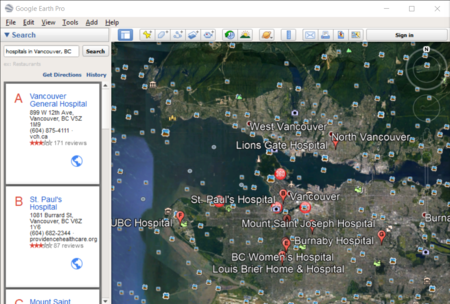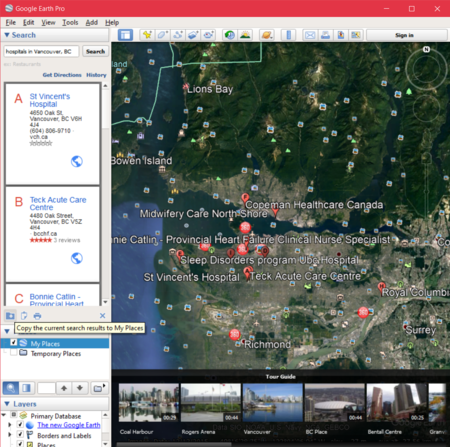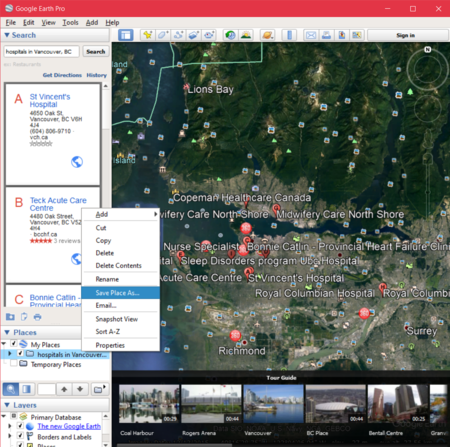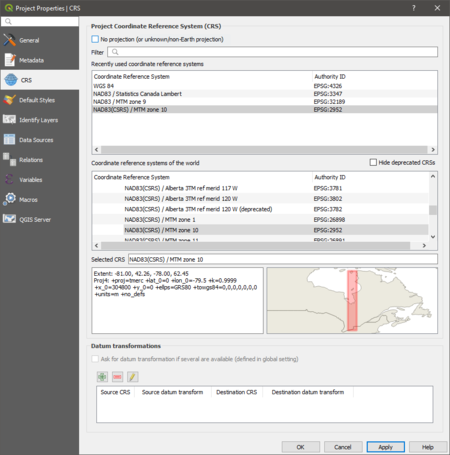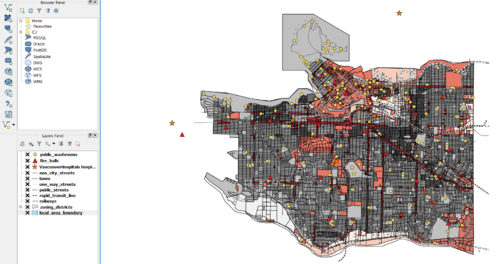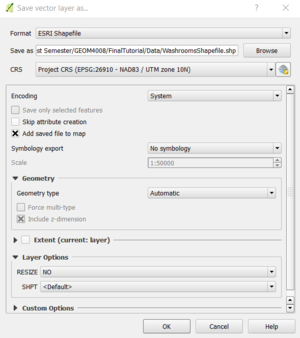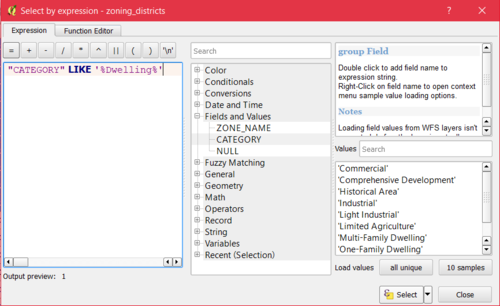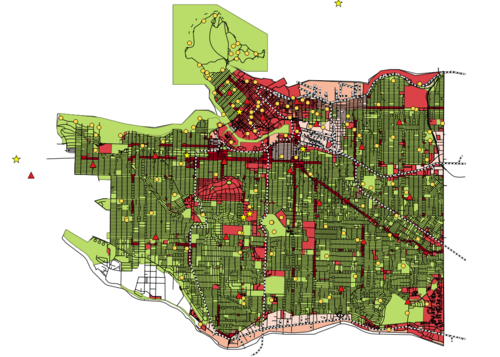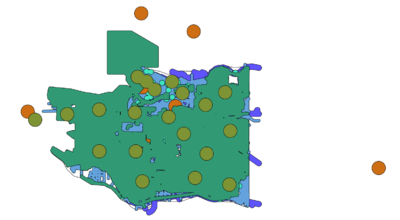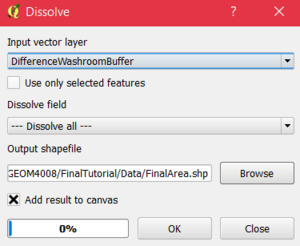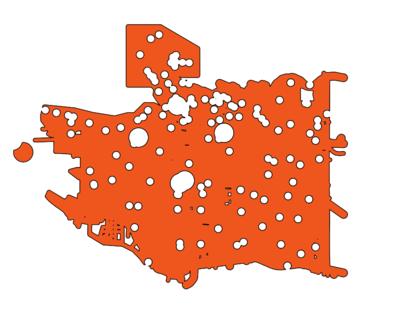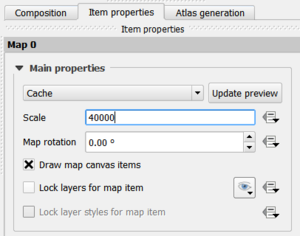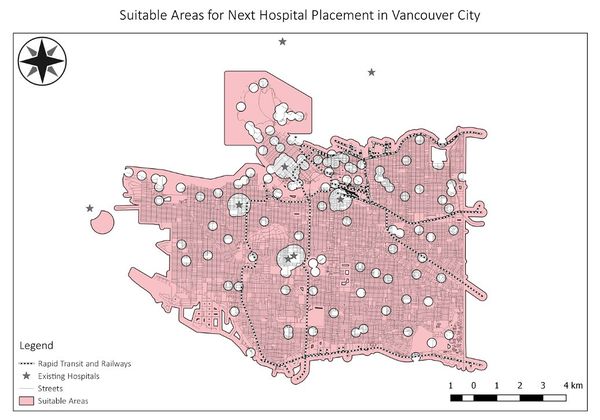Difference between revisions of "Hospital Site Suitability Selection using QGIS"
Jamiecarrick (talk | contribs) |
Jamiecarrick (talk | contribs) |
||
| Line 44: | Line 44: | ||
Now that you have downloaded the software and collected the required data, it is time to begin. Open QGIS, click the '''New Project''' button (white piece of paper) in the top left to start a new project. Save it in your working folder under whatever name you choose (try not to use spaces or funny characters in your file name). |
Now that you have downloaded the software and collected the required data, it is time to begin. Open QGIS, click the '''New Project''' button (white piece of paper) in the top left to start a new project. Save it in your working folder under whatever name you choose (try not to use spaces or funny characters in your file name). |
||
=== Setting Up the Environment === |
=== Setting Up the Environment === |
||
| − | Vancouver’s data files are projected in UTM Zone 10, NAD83 (CSRS) so that is what you should project your files as. To do this, go to the '''Project''' menu, select '''Properties'''. The Project Properties windows will open. Select '''CRS''' from the left hand menu and then toggle on ''Enable ‘on the fly’ CRS transformation''. The CRS that should be selected is NAD83(CSRS) / UTM zone 10N for the Vancouver region. Click '''Apply''' to apply the change. From this window, under the '''General''' tab, you can set the project home directory, which should be the "Data" folder. Once this is done, click '''Apply''' then '''OK'''. |
+ | Vancouver’s data files are projected in UTM Zone 10, NAD83 (CSRS) so that is what you should project your files as. To do this, go to the '''Project''' menu, select '''Properties'''. The Project Properties windows will open. Select '''CRS''' from the left hand menu and then toggle on ''Enable ‘on the fly’ CRS transformation''. The CRS that should be selected is NAD83(CSRS) / UTM zone 10N for the Vancouver region. Click '''Apply''' to apply the change. From this window, under the '''General''' tab, you can set the project's home directory, which should be the "Data" folder. Once this is done, click '''Apply''' then '''OK'''. |
Revision as of 14:20, 6 October 2018
Purpose
The purpose of this tutorial is to show users how to perform a site suitability analysis for hospital placement, using QGIS. This tutorial will focus on Vancouver, BC to provide an example of how to complete this task. In the process users will gain a better understanding of free and open source software (FOSS), learn how to extract spatial data from Google Earth for use in other GIS software, as well as how to set up and manipulate data in QGIS.
Introduction
When building a new hospital, there are criteria that should be followed in order to find the most appropriate location. These criteria consist of required proximities or distances from certain features, such as roads and public washrooms. Using GIS software, a map can be created of all areas in a city that meet these criteria, which can be used to select a hospital location. In this tutorial, a map of suitable areas in Vancouver will be created. The criteria used in this tutorial will be based on two papers (GIS-Based Multi-Criteria Analysis for Hospital Site Selection in Haidian District of Beijing (Zhou and Wu, 2012) & Hospital Site Selection Using Two-Stage Fuzzy Multi-Criteria Decision Making Process (Soltani and Morandi, 2011)) and can be summarized as follows:
Software
The two software packages required for this tutorial are QGIS and Google Earth. If you do not already have these on your computer, you can use the following instructions to get them.
To download QGIS, click on this link and choose which version you would like. Version 3.2 under the "Latest Release" section will be used for this tutorial, though other versions will work just fine. The alternative is the "Long term release repository" version, which is an older release so it's more stable, but also has less features.
To download Google Earth, click this link and select Agree and Download. Once you have downloaded and installed both software packages, you are ready to download the required data for this tutorial.
Data
Create a working folder wherever you would like your files to be saved on your computer, and within it make another folder titled "Data". This is where all of the data needed to complete this tutorial will be stored. For this project, all of the data required is available at http://data.vancouver.ca/datacatalogue/, except for the file for hospital locations which will be extracted from Google Earth. From the Vancouver data catalogue, you will need to download the following files:
-Fire halls -Local area boundary -Railway -Rapid transit lines -City streets package -Zoning districts and labels -Public washrooms
To download the files, simply click the links above. The files are all in SHP format, except for Public washrooms which does not have an SHP version available, so it is a KML file. Next extract the contents of the files you downloaded into the "Data" folder you created earlier.
Now only one more file is needed, which will contain the location of all of the existing hospitals in Vancouver. Because there is not file for this in the Vancouver Data Catalogue, we will use Google Earth to find all hospital locations in vancouver, then export them as a KMZ file. To do this, open Google Earth and search for "hospitals in Vancouver, BC".
Next, click the folder icon below the search results that says “Copy the current search results to My Places” when you hover over it.
Now right click on the folder containing your search results and select Save Place As...
Give the file a name and make sure the Save as type: is Kmz, then save it into your "Data" folder. Now that you have all the required files, you are ready to start the tutorial.
Tutorial
Now that you have downloaded the software and collected the required data, it is time to begin. Open QGIS, click the New Project button (white piece of paper) in the top left to start a new project. Save it in your working folder under whatever name you choose (try not to use spaces or funny characters in your file name).
Setting Up the Environment
Vancouver’s data files are projected in UTM Zone 10, NAD83 (CSRS) so that is what you should project your files as. To do this, go to the Project menu, select Properties. The Project Properties windows will open. Select CRS from the left hand menu and then toggle on Enable ‘on the fly’ CRS transformation. The CRS that should be selected is NAD83(CSRS) / UTM zone 10N for the Vancouver region. Click Apply to apply the change. From this window, under the General tab, you can set the project's home directory, which should be the "Data" folder. Once this is done, click Apply then OK.
Importing Data
Once QGIS is launched, go to the Layer menu -> Add Layer -> Add Vector Layer. In the pop-up window, set your source type as File and click the Browse button under the Source header. Browse to where your shapefile is and double-click it or highlight it and select Open. Insert each of the shapefiles you would like to analyze. When inserting the city streets shapefile, make sure to select the non_city_streets, one_way_streets, lanes and public_streets shapefiles from the folder. From the rapid transit folder, you only need to import the rapid_transit_line shapefile. Modify each shapefile to look the way you would like it to by double-clicking the layer from the Layers Panel on the left hand side, then selecting Style from the left hand side of the popup window. Here you can change the symbol type (such as gradient, single symbol, categorized etc), the colour, the size and more. You’ll notice that some of the points in the hospital KMZ you created don’t lie within the Vancouver local area boundary; this is not a problem as later on in this tutorial the non-valid points will be dissolved.
Converting KMZ to Shapefile
In order to be able to perform operations such as buffer and clip for fire halls, public washrooms and hospitals which are currently KMZ files, we need to convert them to shapefiles. To do this, right click the file from the Layers Panel, then select Save as. In the pop-up window, make sure the Format is ESRI Shapefile, choose where you want to save it and what you want it to be called by selecting the Browse button and make sure the CRS is Project CRS (EPSG:26910 -NAD83 / UTM zone 10 N) and click OK. Once the shapefiles have been added, remove the original data files from the project.
Editing Attribute Tables: Selecting by Expression
Because one of our criterion for hospital site selection is that it should be within a certain distance of residential areas, we need to extract residential areas from the zoning districts shapefile. To do this, you must right-click on the zoning_districts layer and select Open Attribute Table. An attribute table of the zoning districts layer will appear and it will have categories of zoning types as well as zone names. Once you have the attribute table open, select Select Features Using an Expression (the icon showing small yellow square with an E). A Select By Expression window will appear, and in the function list, expand the Fields and Values and select Category. Select the all unique button in the bottom right corner beside Load values and a list should appear of the unique values from this attribute. The field values will have the list of different zoning categories that were seen in the attribute table. In the expression box of the select by expression window, when you double click on the CATEGORY from the Fields and Values list, "CATEGORY" will appear. Once that appears, select the equal (=) sign where the available operators are listed. The next step is to select a field value. Because we want residential areas, we need to select multiple zoning categories. The expression should be "CATEGORY" LIKE '%Dwelling%'. This selects all zones where “Dwelling” is in the name. Click the Select button in the bottom right hand corner and then click Close.
Saving Selected Polygons (Shapefile)
The selected zones that are now highlighted can be saved as their own shapefile. To do this, right click on the zoning_districts layer and select Save As and a window will appear. In this window, the format that the shapefile should be saved under is "ESRI Shapefile". Click the Browse button to choose where the file will go and give it a name. Toggle on Save only selected features and Add saved file to map and then click OK.
Merging Shapefiles
Because we want to perform operations on all of the street shapefiles and all of the railway shapefiles, we need to merge them. To do this, select the Vector menu -> Data Management Tools -> 'Merge Shapefiles to One. Check the Select by layer in the folder box. Under Input files click Browse and select all of the street files you want to merge (all of the ones you have imported into the project previously). Make sure the Add result to map canvas box is checked and click OK and then Close when the operation is finished processing. Repeat this to merge the rapid transit and railways shapefiles and then remove all of the street and railways files you had imported earlier in the tutorial.
Buffering Files
Now we need to buffer each of the shapefiles in order to make them meet the criteria for hospital site selection. To do this go to the Vector menu, select Geoprocessing Tools and then select Buffer. For buffering railways, choose the newly created merged railway shapefile from the Input vector layer dropdown menu. Select the number of segments you want to approximate (the number of side the buffer portions have is 4*the segments you choose; the more, the rounder the buffer result). Set the buffer distance to 200 (from the criteria above). Check the Dissolve buffer results and Add result to canvas boxes and choose where you want the file saved and what you want it called. Click OK and then Close once the process is finished.
Repeat this with each of the remaining shapefiles using the criteria presented above. The finished result should look something like this:
Merging Shapefiles (again)
Now that all of the original shapefiles have been buffered and clipped to only show the portions that are applicable for hospital site selection, we need to merge all of the shapefiles where we want to be within a certain distance (residential, streets, railways, and fire halls) together to get one easy to analyze and inclusive shapefile. To do this repeat the process outline for merging earlier, but this time choose the files listed above.
Difference
Because we don’t want to include the land that is within a certain distance of public toilets and existing hospitals, we must clip the buffer we made of these files from the original shapefile of all suitable areas that we just created in order to get the final acceptable areas. To do this go to the Vector menu, select Geoprocessing Tools and then select Difference. The Input vector layer should be the merged shapefile you just created from buffers that we wanted to be within a certain distance of. The Difference layer should be the hospital buffer (we will repeat for public washrooms as well). Click Browse and choose where to save the file and what you want to name it and then click OK. Repeat for the washrooms, but this time the Input vector layer should be the file you just of acceptable areas without the hospital buffer and the Difference layer should be the washroom buffer.
Dissolve
Because we performed multiple operations on the final file, we should dissolve everything to make one clean and inclusive shapefile. To do this, go to the Vector menu, select Geoprocessing Tools and then select Dissolve. The Input vector layer should be the shapefile you just creating when dissolving the public washroom buffer from the acceptable areas merge. For the Dissolve field, choose dissolve all. Browse to where you want to save your final shapefile and what you want it to be called and click OK and Close.
The final result of all of the processes we have performed should look something like this:
Making a Map
Once we have produced the data that we want to showcase, we can use QGIS to make an aesthetically pleasing map. First, turn on all of the layers that you would like to be showcased and turn off all others by selecting and unselecting the checkbox next to each layer name. For example, I have chosen to showcase the location of existing hospitals, roads, railways and the land that is suitable for the placement of the next hospital to be built. Select Project -> New Printer Composer and then type a name for your map in the text box and select OK (it does not have to be the same as the title you place on your final map). In the pop-up window, select Layout -> Add Map and then draw a rectangle on your canvas where you would like your map. To re-position your map display, select Layout -> Move Content. Now you can drag your map into place and zoom in and out. Under the Item Properties tab on the right hand side, you can also change the scale to get the perfect sizing.
To add a title, select Layout-> Add Label and draw a box for your title. Under Item Properties -> Label you can type your title in the textbox and change the font type, size, colour etc.
To add a north arrow, select Layout -> Add Image and draw a box on your canvas. Under Item Properties -> Search directories you can view different North Arrows and choose which one you would like to use.
Similarly, you can add a scale bar by selecting Layout -> Add Scalebar.
To add a legend select Layout -> Add Legend. To show only the legend items that are present on your current map, select the icon that resembles a filter cone under the Item Properties -> Legend items menu. To rename legend items, double click a legend item and enter the text you want displayed. You can also rearrange legend items by dragging them up and down.
Once you are happy with your map, you can export it as an image, SVG or PDF by selecting Composer from the top left hand menu and choosing either Export as Image, Export as SVG or Export as PDF.
Conclusion
QGIS is a well crafted and easy to use software that in this instance has allowed the production of a map that showcases suitable areas for the future placement of a hospital in Vancouver City, BC. This is just an example of the many ways that a few shapefiles can be manipulated to produce an informative map showcasing site-suitability of a specific building. It also shows that even people with no money for a software license can identify suitable areas for the placement of a multitude of things.
References
- City of Vancouver (2017). Open Data catalogue | City of Vancouver. Retrieved December 18, 2017 from City of Vancouver http://data.vancouver.ca/datacatalogue/index.htm
- Google (2017). Download Google Earth. Retrieved December 18, 2017 from Google https://www.google.com/earth/download/gep/agree.html
- QGIS. (2014). Download QGIS. Retrieved December 18, 2017 from QGIS http://www.qgis.org/en/site/forusers/download.html
- Soltani, A. & Marandi, E. Z. (2011). Hospital Site Selection Using Two-Stage Fuzzy Multi-Criteria Decision Making Process. Journal of Urban and Environmental Engineering, 5 (1). Retrieved from https://doaj.org/article/62479c17294e4cfb9a5777caaf2c7a38
- Zhou, L. & Wu, J. (2012). GIS-Based Multi-Criteria Analysis for Hospital Site Selection in Haidian District of Beijing. Retrieved October 24, 2017 from https://www.diva-portal.org/smash/get/diva2:555935/FULLTEXT01.pdf

